On 1 September, Conservative MP Andrew Rosindell asked the Ministry of Defence what steps had been taken to improve the domestic development, production, and delivery of autonomous systems for service in the Royal Air Force.
Defence Minister Maria Eagle said the 2025 Strategic Defence Review had made clear that the RAF must remain at the forefront of change.
“The Strategic Defence Review recognised that the RAF must stay at the leading edge of Combat Air’s evolution, through the transition from exclusively crewed Combat Air platforms to a Future Combat Air System (FCAS) with a mix of crewed, uncrewed, and increasingly autonomous platforms, integrated into the UK’s digital targeting web.”
She highlighted two platforms now in service. “Both Protector and Stormshroud, the RAF’s first ACP, entered service this year, the latter being an excellent example of how the RAF is taking modernising its approach to autonomous systems, by combining expertise of the RAF, the Government’s Defence Science and Technology Laboratory and UK industry.”
Eagle added that autonomy will play a central role across multiple capabilities. “The RAF are committed to the exploitation of autonomy and other complimentary technologies in a range of systems, delivering effects across the Air domain.”
She confirmed that future decisions will be shaped by ongoing investment planning. “The pace of adoption will be facilitated by the Defence Investment Plan, due for publication later this year.”


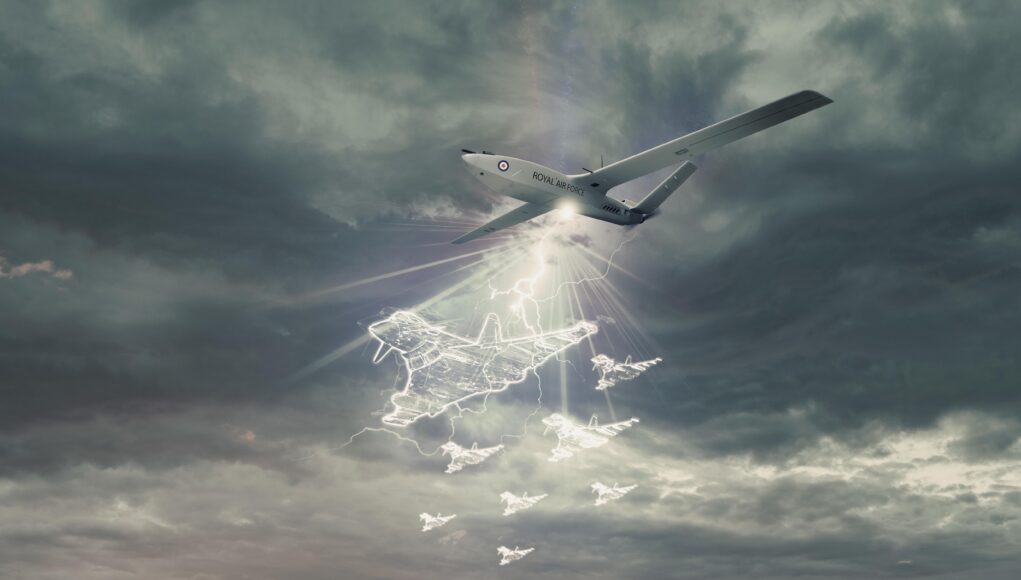
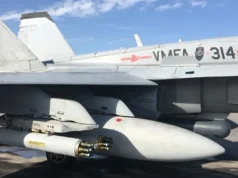

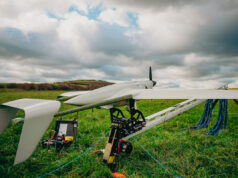
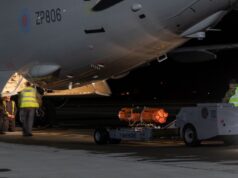
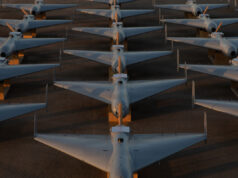

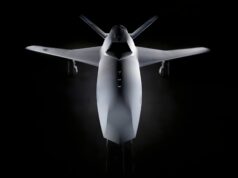




What steps have been taken?? Let’s see, we’ve done hundreds of trials, we’ve informed future decisions, studied emergent threats, consulted with stakeholders, announced plans to triple lethality, while gapping capability and ordering nothing.
Simple.
How can you see through the smoke and mirrors.. witchcraft I say… burn him before he asks for an FOI we won’t answer.
😂😁🤔😳☹️🤞👍🇬🇧
When the RAF cancelled the Mosquito project, telling us it could be done faster and cheaper, the announcement was written in a form of English the Microsoft reading age calculator declared as too high to be quantified, over the reading level of a professional graduate. This ability to speak to the public in words that can’t possibly be understood is a direct output of the RAF drone programme and will find uses in general politics and other areas where complete obscurity of purpose is a boon. Unlike other forms of cryptographic advance, such as quantum cryptography, the ability to talk ****** can never be decrypted, not by our enemies or our allies. This one-way transformation, prototyped by the RCO, will stand the test of time, and our senior military leadership will be talking ****** for many decades to come.
Yeah I recall the Project Mosquito being cancelled along with the spiel about gaining a deeper understanding of cheaper, more affordable alternatives. That they also didn’t order any of.
Not sure I have any faith in Project Microsoft mind.
👍
You know it off by pat.
You have forgetting about all the cool sounding four letter acronyms they had to dream up as well as Greek and Celtic god names for various programs that never happened.
This is serious work for public school boys 😀
The Article Picture shows which direction the RAF is taking.
One Drone and a whole bunch of fake Typhoons.
Our Enemies will think we have many more Typhoons than we actually have.
Fake CH3’s next ?
The drone is clearly intended to project squadrons of Typhoons onto passing clouds, it’s genius and they will be ultimately stealthy… a bit iffy in desert conditions mind or so I hear.
ha
So the answer is NOTHING..
Looks that way.
No more dithering, the UK must grab the bull by the horns and address the need to boost aircraft fleet numbers. Sadly, we would find it easier to extract gold from a monkey’s bottom than achieve a follow-on order of Typhoon. So, autonomous craft have to step up and fill the obvious attrition issues if an air war breaks out. In such an event, manned aircraft would become a precious commodity as modern-day combat can be very expensive in lives and material, and as recently stated, we’d prefer to scrap Typhoons than replace them with new planes. China has recently displayed their progress in remote systems, shocking the West. Progress, which, according to observers, is now ahead of the US and Europe. I can’t believe I’m thinking that ‘Duncan Sands’ was ahead of the game by predicting that future air war will be missiles, which also equates to unmanned systems.
Doesn’t amount to much does it?
More worrying is the latest GAO report on F35 block 4. The scope of the upgrade is being reduced to give some chance of being ready by 2031. Costs have risen to $16.5b and the GAO notes the aircraft programme continues to over promise and under deliver. There is no specific mention of weapons integration timescales but it doesn’t look good.
It’s truly laughable, Lockheed Martin is planning all manner of ‘super’ upgrades to the F-35 yet don’t even have one available in the forseeable future that actually works as promised. Starts to raise the question that no probably one wants to answer if we are led to believe we can write conceptionally far more modern, modular software for up coming new gen fighters like the F-47 and Tempest that comprehensively works can none of this methodology help in the F-35. If it’s going to be such a vast difference perhaps at some stage in the past a similar strategy should have been applied to the F-35 and a total rewrite on that basis started. Or are we being too optimistic about these new generations of software making such glacial progress a thing of the past, as we watch things seemingly just get worse with the utter Spaghetti Junction of F-35 software efforts. Concerning, is nothing being learned to improve matters?
To add to Posse’s post.
Storm Shroud. I understand a grand total of 24 have been bought for the RAF.
Not in the hundreds, or the thousands.
24.
A FOIA asking how many regular and reserve personnel to deploy these assets with 216 Sqn would be interesting.
I don’t know how good Stormshroud is to be perfectly honest, but I struggle to see how a propellor driven drone, with a lawn mower engine and top speed of 56mph is capable of “augmenting” a F35 or Typhoon.
It won’t be flying next to a Typhoon let alone a F35, you’re right about that. It is far too slow for that, even a Grob is too fast for it. Instead it will be flying on its own towards to air defence sites. Then activating the Leonardo Britecloud jammer it carries. This will either generate lots of white noise to jam radars or generate multiple ghost aircraft as seen in the image above. This will allow our aircraft to operate more freely near air defence sites or to target them. Think of it as a very, very cheap version of the Boeing EA-18 G Growler.
Which brings me to a point I’ve made previously.
It needs to be launched close to the target.
So that means in the field near the front line.
And if there is no front line to launch from?
Like a Akrotiri to Yemen sortie, for example?
So why is it RAF?
There is going to have to be a lot of joined up collaboration to get it to work efficiently. As you say the UAS will have to be launched close to where its expected to operate. The blurb say Stormshroud has a flight duration of 16 hours and travel 100km (62 miles), but at a speed of 90kph (56mph). If it’s going to be used to mask entry through an air defence zone for a strike package. Then it will have to be in position a long time before the jets arrive. But as the UAS is really cheap and Britecloud is seen as an expendable jammer. Then I can see why it’s being purchased.
Could discuss all day why it being purchased by the RAF over Army. But I did hear talk of Britecloud being fitted to Banshee drones, which means they could be used by the carriers for the same purpose.
I’d agree that the RAF seems the least best fit of the three services. The underlying platform has a comms range of 100km. Unless changes have been made to give it satellite control, Akrotiri sorties to any mainland destination would not be simple. Perhaps they are to be carried by an A400M or similar. Nevertheless 100km seems awfully close to fly the mothership. Let’s hope that distance has been boosted.
I’d guess they can only be for spiral evolution — not a wholly bad thing if there’s dedicated budget for it.
If it is going to directly support RAF ops then surely they need to be responsible for it. They have to be able to plan when and where to send them with full coordination with the wider air plans. I assume they also come from the RAF budget or army may cut them as not supporting army activities and direct priorities. Seems reasonable that they are RAF
You more reasonably may ask why the chinooks are owned by the raf given they are basically taxis for the army…. 😉
As for deployment, a job for raf regiment? I assume there are going to be plenty of RW forward bases and distributed landing points that the raf will have to support in higher end war fighting. These could be managed in line with them as a thought? For a yemen type op could you not launch them from a ship? Recovery, if you want to use them again, may be harder this way tho…. Logistics and planning may be complicated but certainly doable
All good points, actually.
The RAF SHF, RAF Reg, and some other enabling assets all operate out in the field.
Army or RAF! Not going down that rabbit hole!
Is it only the UK that brigades these assets as air force rather than Army?
I remember a very interesting piece from around the 1994 95 Front Line First review/cuts. The were proposals to scrap the RAF SHF, scrap the AAC, and combine both into a “Royal Flying Corps.” I forget detail but assume ultimately that would have ended up as an Army asset! So it solved nothing.
But a typical, get round an issue by rebranding idea none the less.
When I have seen radars, it’s a blip with the information around it; obviously, when fighters turn their transponders off, the radar calculates the speed range, etc. So if this is going to show up on radar, be it the Stormshroud or the false fighter, I’m sure the weapons operator is going to wonder why a fighter is going so slow.
I can’t go into too much detail, but I can give you a top level introduction to some of the jamming techniques. When a threat transmitter transmits, Britecloud will detect it and analyse it. This is done through using digital radio frequency memory (DRFM). DFRM is both hardware and software that samples the threat signal. It can then retransmit it in various ways. It can do a broad spectrum broadcast on and around the threat signal frequency, just transmitting white noise but at a much larger amplitude. The effect on the receiver is that it receives a much larger signal that masks the original signal, on older radar systems, the operator they would see a load of radiated spikes or even a completely unreadable screen. However, Bitecloud is much cleverer than a basic jammer, as it can manipulate the original signal, such as change the phase of the signal. But then transmit multiple versions of the manipulated signal. So like the image above, the receiver will see multiple targets. Because the original signal has been recorded, Briteclould can change the timings the return signal is sent, which along with the phase change can make the “ghost” signals appear on different heights, speed and bearings.
The threat radar may detect the Stormshroud amongst the jamming, but it will be very small compared to the ghost signals or white noise jamming, so is likely to be missed. What is the greatest threat, something that looks like a Typhoon or a small UAS?
Could a Jackdaw drone carry it? At least then it could be more realistic than, as Spartan described it, “a lawn mower engine and top speed of 56mph.”
Carry the jammer.
Oh come on the Ruskies are never going to suspect lawn mowers are a threat are they, geez are they in for a surprise as their troops are literally mowed down. I wonder if it can hover?
I bet Jims wife has a remote controlled mower !
What, as well as a Hoover?